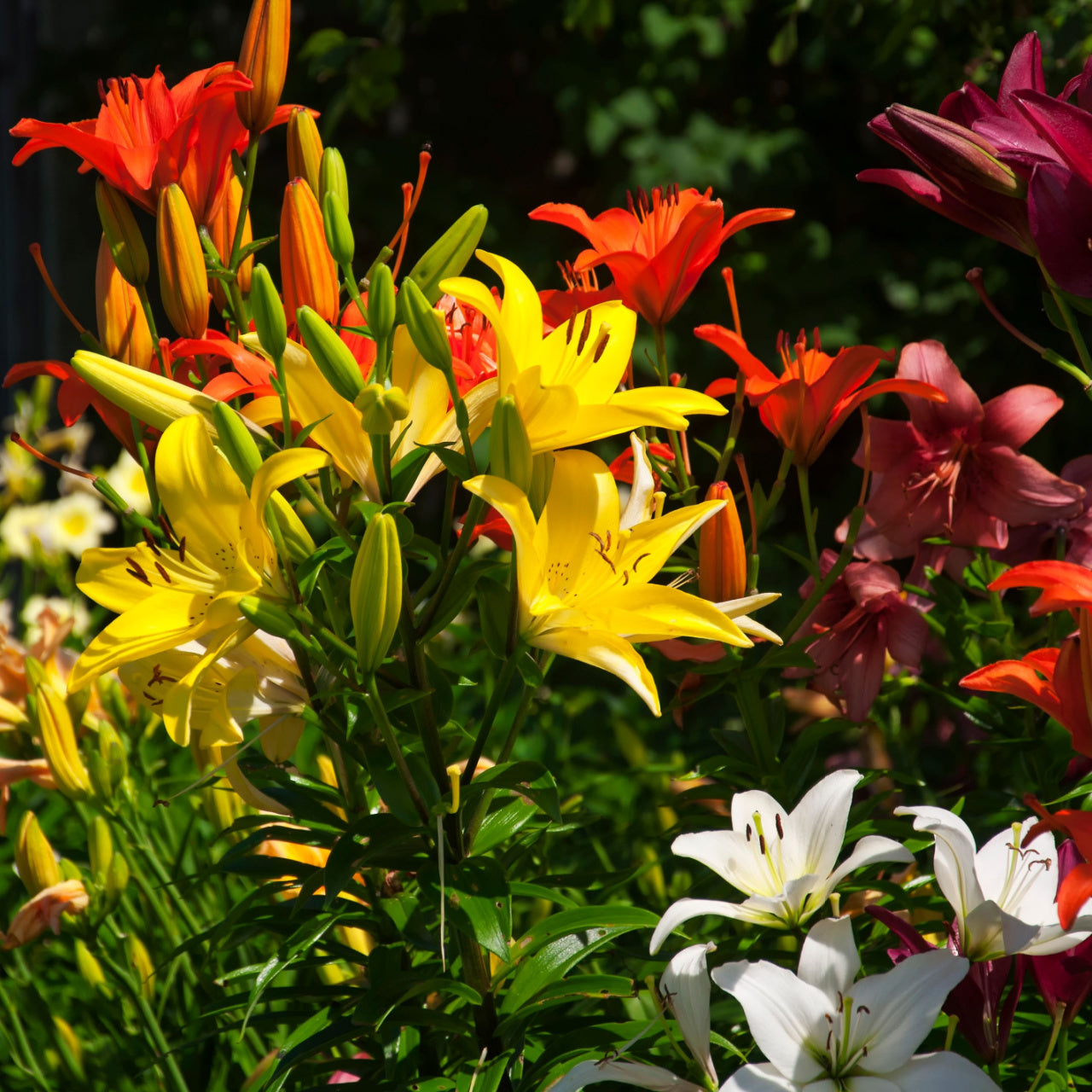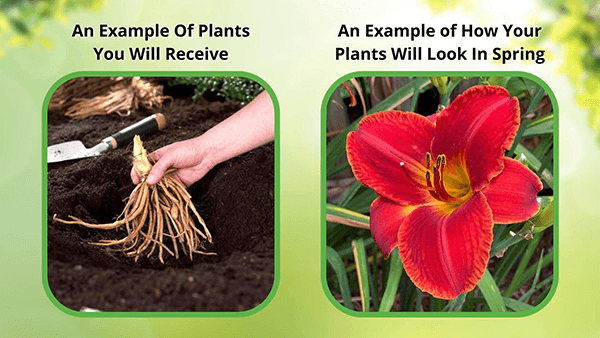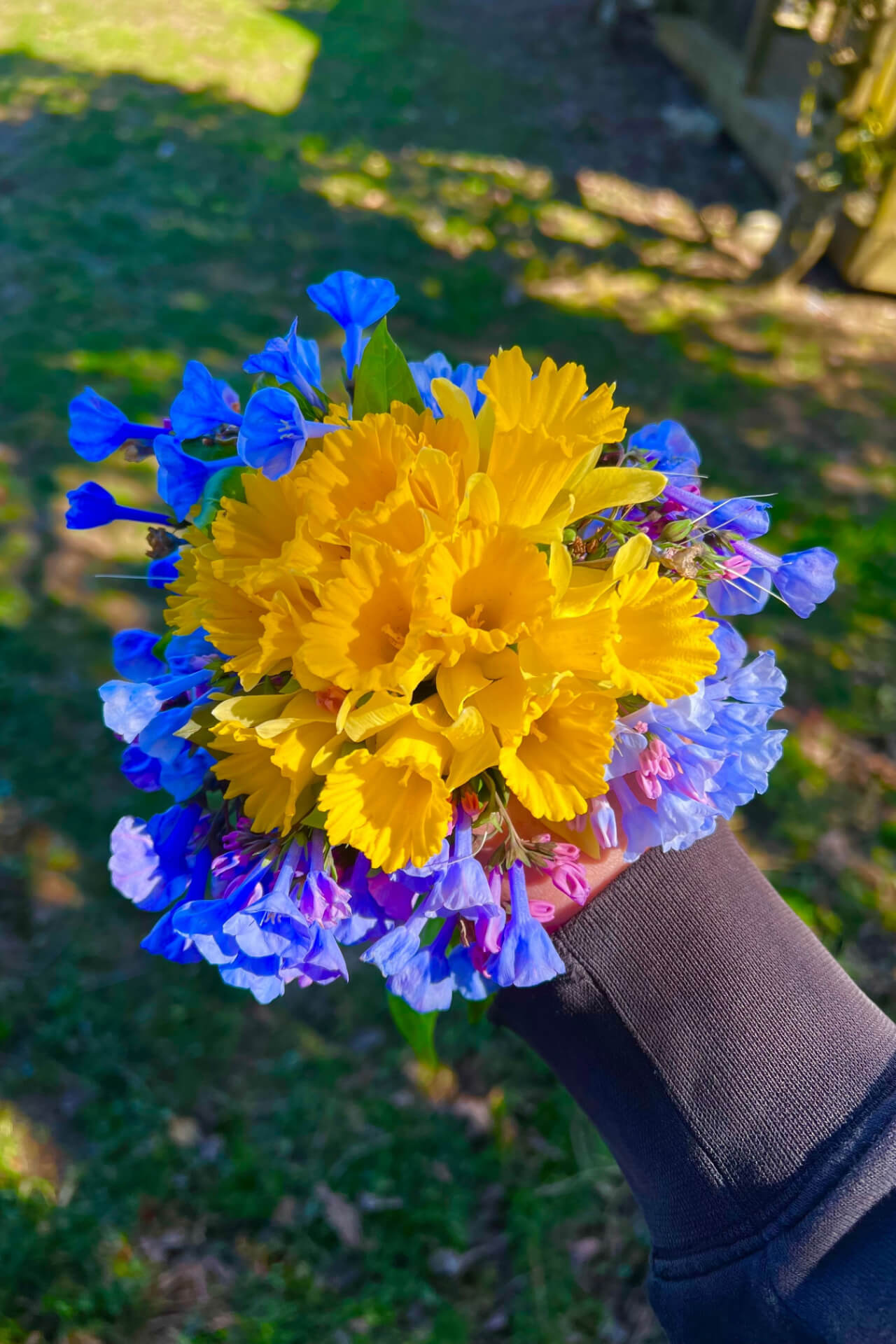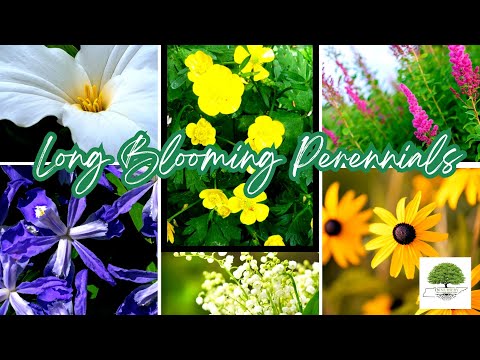Flowering Perennials Plants For Sale
Flowering Perennials will transform your garden into a vibrant and colorful paradise. With dazzling colors, delightful fragrances, and enduring nature, these ten plants are a must-have for every flower enthusiast.
PLEASE NOTE THAT THESE ARE A COLLECTION OF PERENNIALS, NOT SPECIFIC SPECIES. WE CHOOSE TYPES THAT WORK BEST FOR YOUR ZONE ACCORDING TO YOUR ZIP CODE
Colorful Flowering Perennials Plants Live For Decades
Did you know you can buy this mixed variety package ideally suited for your area? Black-eyed Susans can grow two or three inches broad and have vibrant yellow blooms with black centers. The astilbe plants have fern-like leaves, silky smooth, hairless stems, and somewhat spherical clusters. Planting them in clusters is a great way to add visual interest to rock gardens.
Add Color To Your Garden With These Flowering Perennials Plants
The coneflower is a summer-to-fall bloomer that attracts pollinators with pink, purple, or white blossoms. Black-eyed Susans bloom all summer and into the fall, providing a brilliant yellow color to the yard. The daisy-like flowers of the Coreopsis plant bloom into the autumn in various yellow, orange, and red hues. The lavender-blue blossoms of Russian Sage (Perovskia) linger into the autumn and give the garden an air of refined sophistication.
Design Gorgeous Pathways
Planting 15 flowering perennials is an excellent way to design gorgeous pathways and borders. Roman chamomile is beneficial for borders because it returns year after year. Other flowers that come back each year include hostas, peonies, coral bells, and balloon flowers. Their colorful, nectar-rich blooms create beautiful displays and borders and attract pollinators, increasing your yard's biodiversity.
Perennials - Mixed Variety Adds a Pleasant Aroma to Your Yard
Add pleasant aromas to your yard with Flowering Perennials. Garden phlox blooms in abundance from midsummer until early October. Their fragrant blossoms resemble cloves and are most fragrant on bright, warm days.
A powerful, warm, spicy, clove-like aroma wafts from the variously colored blossoms of the dianthus plant. Peonies are evergreen plants that produce fragrant flowers with various aromas, from sweet and rose to lemony and peppery. The daisy-like blooms of Coreopsis don't have much of a smell, but the leaves have an anise-like aroma.
Exposure
Flowering perennials thrive in various light exposures, from full sun to partial shade. Most prefer at least 6 hours of sunlight daily, though some, like hostas and astilbes, flourish in shadier spots. Tailor light conditions to specific plant needs.
Height at Maturity
Over 12"
Usage
Flowering
Shipped As
Bare root
Ships
USPS
Planting Zones
3-9



